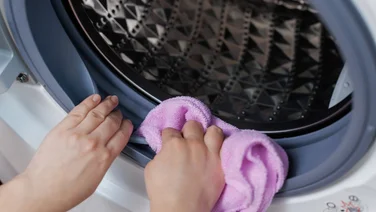To help us provide you with free impartial advice, we may earn a commission if you buy through links on our site. Learn more

Do you have an old denim jacket that has been exiled to the back of the wardrobe? Or a favourite backpack that’s seen prettier days? An iron-on patch is a perfect way to breathe new life into old garments that could do with an upgrade.
Custom patches aren’t just for hiding unsightly rips or embarrassing tears, either; they’re a fun way to add some personal style to any plain-looking possessions you might have. You can add a little interest to that coat you picked up recently or transform a dull-looking hat into a statement piece.
The best part about improving your attire with a slick new patch is that the application couldn’t be more simple. Our guide on how to apply iron-on patches below reveals how, in just a few minutes, you can customise your clothes perfectly every time.
READ NEXT: Best steam irons
How do I know if my patch is an iron-on type or if it needs to be sewed on?
That’s easy – you can tell whether a patch is iron-on because it will have a sticky adhesive back to it. However, if your patch doesn’t already have an adhesive back to it, there may be a way to make it suitable for ironing on with some ingenuity. If you are able to get your hands on an iron-on peel off adhesive tape or sheet, then you may be able to create your own iron-on patch. You’ll need to cut out the shape of your patch from the adhesive material then carefully attach the sticky side to the back. Make sure you are placing the back side of your patch onto the sticky material, and not the side you want to display. Now your standard patch should be transformed into an iron-on patch.
What items will I need to iron on my patch?
You’ll need an iron, an ironing board, the patch, your chosen piece of clothing and a tea towel or pillow case. The cloth is important since it acts as a barrier between the iron and the clothing, ensuring you avoid any damage to your garment. A big, ugly burn mark instead of a cool new patch isn’t the desired finish you’re looking for, after all. If you don’t have access to an iron, then a pair of hair straighteners might also work, but they will make the process trickier, so we’d always suggest investing in a good iron for the job.
What setting should I have my iron on?
Choosing the right setting on your iron is key to successfully applying your patch. It’s heat from the iron that melts the adhesive backing on the patch, bonding it to your garment. To find the most suitable setting for your iron, refer to the care tag inside your garment. The tag should have an outline drawing of an iron, which will feature one to three dots inside of it. These dots relate to the level of heat you can use to iron your garment. A single dot means you should only use low heat, two dots means you can use a medium setting, and three dots means it will be safe to use a hot setting on the textile. If you have any further questions about this you can consult our comprehensive guide to laundry symbols and their meanings. If you’re still unsure, then we advise you play it safe and opt for a cooler setting on your iron – you don’t want to risk heat damage to your clothes.
READ NEXT: Best clothes steamers
Should I steam iron my patch?

No – you should never use the steam setting on your iron to apply a patch. While you can use an iron with steam capabilities, you should ensure there is no water inside the iron. The reason for this is that moisture from the steam will negatively impact the bonding process, might ruin your patch and stop it from sticking.
READ NEXT: Best cordless irons
What materials can I apply an iron-on patch onto?
Cotton is the best fabric for iron-on patches, since it has a high tolerance for heat. Other fabrics such as denim, polyester or wool are also suitable but steer clear of leather or heat-sensitive garments that could become damaged from the process. Waterproof materials such as acrylic or vinyl also aren’t suitable for iron-on patches. So, as much as you might want to upgrade your raincoat with a stylish new patch, you’ll need to settle for a denim jacket or a cotton shirt instead.
READ NEXT: Best steam generator irons
How to iron on a patch step-by-step

1. Choose where you want to position your patch and ensure the area is clean and free from moisture and grease.
2. Preheat your iron until it reaches the correct temperature (remember: check the garment’s tag for the correct setting). For best results, you’ll want the iron at the highest temperature that your fabric can withstand. In general, preheat your iron for about five minutes.
3. Before setting your patch in place, give the area a quick once over with the iron to ensure it is flat and wrinkle-free. Once the area has been freshly ironed, position your patch so that it is completely smooth and exactly where you want it.
4. Next, place a tea towel or other thin cloth over your patch, then press down firmly with your iron over the cloth. The cloth acts as a barrier between your garment and the iron to avoid causing burn damage to your item.
5. Iron over the patch in smooth motions – use the tip of the iron for more precise control. Start at the centre of the patch then move outwards to the edges. Do this for about 30 seconds and then remove the iron, leaving it to cool for a few minutes.
6. Now turn your garment inside out, and repeat the process on the opposite side. Place the cloth over the back of the garment where the patch is positioned and again iron over the area for about 30-60 seconds. Then, remove the heat and leave it to cool down for a few minutes more, this allows the patch to set.
7. Voilà! Your upgraded item of clothing with a new patch in place should be ready to wear. If the patch doesn’t feel secure then you may need to repeat the process until it has fully bonded to the material.
A note of care: make sure you always clean your clothing inside out, so as not to risk losing your patch in the wash.






